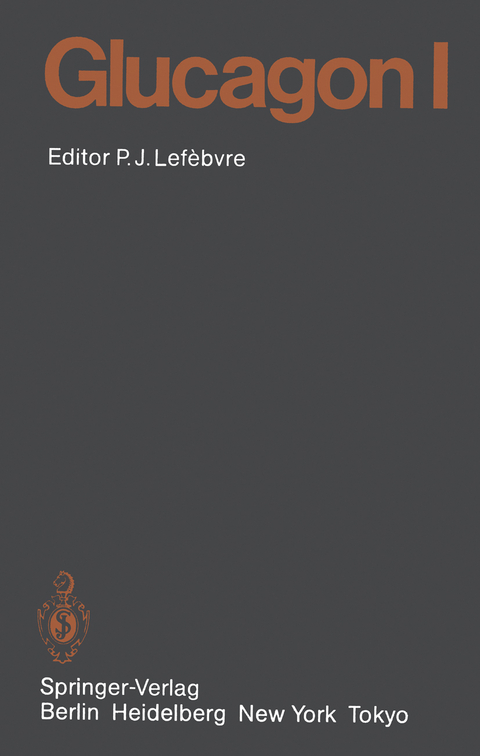
Glucagon I
Springer Berlin (Verlag)
978-3-642-68868-3 (ISBN)
Chemistry and Physicochemistry of Glucagon.- 1 Chemical Characteristics of Glucagon.- 2 The Chemical Synthesis of Glucagon.- 3 The Conformation of Glucagon.- Morphology of the A-cell of Islets of Langerhans, Biosynthesis of Glucagon and Related Peptides.- 4 Glucagon- and Glicentin-Producing Cells.- 5 Ontogeny and Phylogeny of the Glucagon Cell.- 6 The Biosynthesis of Glucagon.- 7 Glucagon, Glicentin, and Related Peptides.- Production and Assay of Glucagon.- 8 Glucagon Preparations.- 9 The Immunogenicity of Glucagon.- 10 Immunoassays for Glucagon.- 11 Heterogeneity of Circulating Glucagon and Glucagon-Like Immunoreactivity.- 12 Radioreceptorassays for Glucagon.- Actions of Glucagon.- 13 The Actions of Glucagon at Its Receptor: Regulation of Adenylate Cyclase.- 14 Glucagon and Liver Glycogen Metabolism.- 15 Glucagon and Gluconeogenesis.- 16 Glucagon and Liver Glucose Output In Vivo.- 17 Glucagon and Ketogenesis.- 18 Glucagon and Amino Acid Metabolism.- 19 Glucagon and Adipose Tissue Lipolysis.- 20 Glucagon and Lipoprotein Metabolism.- 21 Glucagon and Liver Regeneration.- 22 Glucagon and Insulin Secretion.
| Erscheint lt. Verlag | 19.11.2011 |
|---|---|
| Reihe/Serie | Handbook of Experimental Pharmacology |
| Co-Autor | T.T. Aoki |
| Zusatzinfo | XXX, 536 p. |
| Verlagsort | Berlin |
| Sprache | englisch |
| Maße | 170 x 244 mm |
| Gewicht | 986 g |
| Themenwelt | Medizin / Pharmazie ► Medizinische Fachgebiete ► Pharmakologie / Pharmakotherapie |
| Medizin / Pharmazie ► Pharmazie ► PTA / PKA | |
| Schlagworte | Antibody • Antigen • Chemistry • Chromatography • Drogen • Glucagon • Hormone • Hypophyse • Insulin • Metabolism • Nutrition • pharmacology • Prostaglandin • resistance • Sepsis |
| ISBN-10 | 3-642-68868-3 / 3642688683 |
| ISBN-13 | 978-3-642-68868-3 / 9783642688683 |
| Zustand | Neuware |
| Haben Sie eine Frage zum Produkt? |
aus dem Bereich


